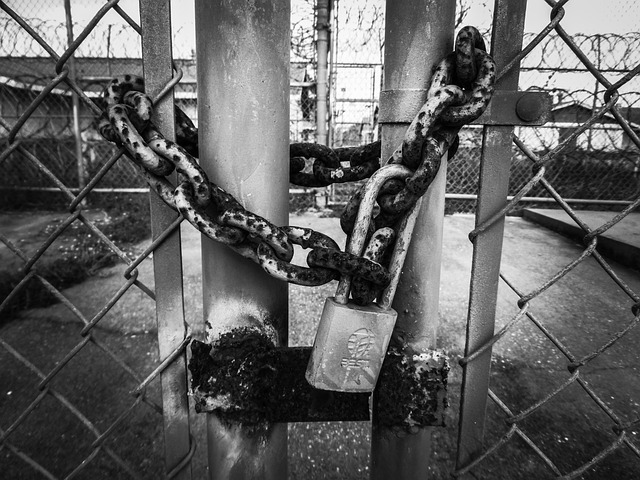TL;DR:
Identifying patterns in repeat DUI offenses among high-risk individuals is crucial for public safety. Data analysis reveals consistent behaviors requiring targeted interventions. Effective management strategies include strengthening legal consequences, expanding treatment access, and implementing robust monitoring systems to disrupt recurring DUI patterns, reduce recidivism, and foster long-term behavioral change.
High-Risk Reoffender DUI Management faces challenges like inconsistent monitoring and technological inaccuracies, leading to loopholes that allow repeat offenders to evade accountability. To combat this, a multi-pronged approach is needed: stringent sentencing, mandatory alcohol treatment, advanced law enforcement training & technology, data analytics for hotspot targeting, and ignition interlock devices (IIDs).
Community-based initiatives like volunteer work further reduce DUI incidents by promoting social integration. Future prevention relies on integrating AI-powered predictive analytics, enhanced GPS monitoring, and citizen reporting apps to address existing loopholes in High-Risk Reoffender DUI Management.
In the ongoing battle against drunk driving, understanding and addressing high-risk reoffender DUI patterns is paramount. This article delves into critical areas such as recognizing emerging trends among repeat offenders, identifying vulnerabilities in current management systems, and assessing their impact on public safety. We explore effective strategies to strengthen DUI laws and enforcement, drawing from successful case studies, while also looking ahead to the role of technology and innovation in preventing future incidents of high-risk reoffending.
- Understanding High-Risk Reoffender DUI Patterns and Trends
- Identifying Loopholes in Current DUI Management Systems
- The Impact of Loophole Exploitation on Public Safety
- Strategies to Strengthen DUI Laws and Enforcement
- Case Studies: Successful Closing of Gaps in DUI Programs
- Future Prospects: Technology and Innovation in DUI Prevention
Understanding High-Risk Reoffender DUI Patterns and Trends

Identifying and understanding patterns in repeat DUI (driving under the influence) offenses among high-risk reoffenders is a critical step in improving public safety. By analyzing data, researchers have uncovered distinct trends that can guide law enforcement and policymakers in implementing more effective prevention strategies. These high-risk individuals often display consistent behaviors, such as driving while impaired by alcohol or drugs, despite previous arrests and convictions. Understanding these patterns allows for the development of targeted interventions.
Focusing on high-risk reoffender DUI management involves a multi-faceted approach. This includes enhancing legal repercussions, improving access to treatment programs, and implementing robust monitoring systems. By closing gaps in current strategies, authorities can disrupt recurring DUI patterns and reduce recidivism rates. Such measures aim to not only deter future offenses but also ensure that high-risk individuals receive the necessary support for long-term behavioral change.
Identifying Loopholes in Current DUI Management Systems

DUI (Drunk Driving) management systems, while designed to prevent and mitigate impaired driving, often present hidden loopholes that can be exploited. These gaps in current strategies can lead to high-risk reoffenders slipping through the cracks. One such loophole lies in the inconsistent application of post-conviction monitoring, where some jurisdictions fail to implement robust tracking mechanisms for repeat offenders. This results in a lack of accountability and increased potential for reincidence among high-risk individuals.
Additionally, technological advancements meant to enhance DUI management may inadvertently create new loopholes. For example, while breathalyzer technology is widely used, there are instances where these devices can produce false readings due to various environmental factors or individual physiological conditions. Such inaccuracies can lead to wrongful convictions or failed prosecutions, allowing high-risk reoffenders to continue their dangerous behavior undeterred.
The Impact of Loophole Exploitation on Public Safety

The exploitation of legal loopholes has significant implications for public safety, especially regarding high-risk reoffenders and their potential to cause harm while under the influence of alcohol (DUI). In many jurisdictions, loophole abuse enables dangerous individuals to evade mandatory sentencing or avoid consequences for their actions. This, in turn, increases the risk of reoffending and puts communities at greater peril. For instance, certain loopholes might allow a repeat DUI offender to walk free with minimal penalties, thereby perpetuating a cycle of impaired driving that could lead to fatal accidents.
Such gaps in legislation directly impact public confidence in the justice system and can foster a sense of insecurity among citizens. Addressing these loopholes is crucial to ensure that justice is served and potential crimes are deterred. Effective DUI management strategies, coupled with robust legal frameworks, are essential to mitigating risks associated with high-risk reoffenders, ultimately safeguarding the well-being of communities.
Strategies to Strengthen DUI Laws and Enforcement

To strengthen DUI (Drunk Driving Under Influence) laws and enforcement, several strategic approaches can be implemented to address existing loopholes and gaps in current systems. One key focus is targeting high-risk reoffenders through stringent sentencing guidelines and mandatory alcohol treatment programs. Enhancing law enforcement capabilities involves expanding training on recognizing intoxication levels, utilizing advanced technology for sobriety checks, and promoting community involvement in reporting suspected DUI incidents.
Additionally, implementing robust data analytics can help identify patterns and hotspots for DUI offenses, enabling targeted interventions. Encouraging the use of ignition interlock devices (IIDs) is another effective measure, especially for repeat offenders, as they act as a technological barrier to driving under the influence. These strategies collectively work towards reducing recidivism rates and ensuring safer roads for all.
Case Studies: Successful Closing of Gaps in DUI Programs

In the realm of DUI (Drunk Driving Under Influence) programs, closing gaps in prevention and intervention has proven to be a game-changer. Case studies illustrate that targeting high-risk reoffenders through comprehensive management strategies can significantly reduce recidivism rates. One such successful approach involves intensive counseling sessions tailored to address underlying behavioral issues, coupled with strict monitoring utilizing advanced technology like GPS tracking devices. This dual-pronged strategy not only discourages repeat offenses but also enables authorities to navigate the complex landscape of high-risk individuals more effectively.
Additionally, community-based initiatives have shown promise in fostering positive change. Programs that involve reoffenders in volunteer work or community service not only offer a sense of purpose but also facilitate social integration and reduce the likelihood of future DUI incidents. These case studies underscore the importance of personalized interventions, evidence-based practices, and innovative solutions in combating DUI, especially among high-risk populations.
Future Prospects: Technology and Innovation in DUI Prevention

The future of DUI (Driving Under the Influence) prevention lies in leveraging advanced technology and innovative solutions, which can significantly enhance existing strategies. With the ever-evolving digital landscape, there is immense potential to create more effective systems for identifying and managing high-risk reoffenders. AI-powered predictive analytics can play a pivotal role in forecasting recidivism, enabling authorities to intervene early and implement tailored prevention programs. For instance, machine learning algorithms can analyze various data points like past offenses, demographic information, and behavioral patterns to identify individuals most at risk of repeat DUI incidents.
Moreover, technology can facilitate more efficient High-Risk Reoffender DUI Management through enhanced surveillance and real-time tracking. Developing sophisticated GPS monitoring devices with remote activation capabilities allows authorities to closely watch high-risk individuals, ensuring compliance with bail conditions or treatment programs. Additionally, innovative mobile applications could empower citizens to report suspicious behavior, further strengthening the network of oversight. These technological advancements hold promise for creating a safer environment by closing loopholes and gaps in current DUI prevention measures.
By identifying and addressing loopholes in current DUI management systems, we can significantly enhance public safety. Understanding high-risk reoffender DUI patterns and trends is crucial for developing effective strategies to strengthen DUI laws and enforcement. Case studies demonstrating successful gap closure in DUI programs offer valuable insights, while future prospects centered on technology and innovation promise even greater advancements in DUI prevention. Together, these efforts contribute to a safer society by closing gaps and reducing recidivism among high-risk reoffenders.






